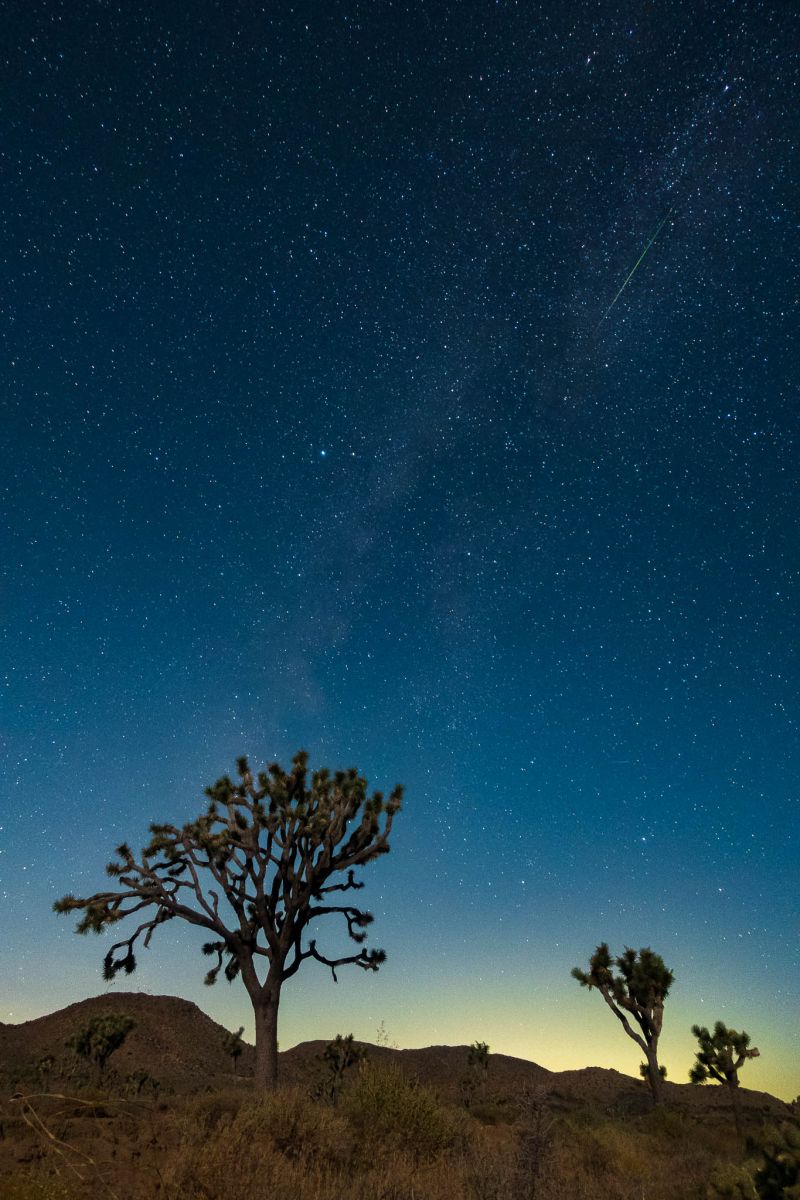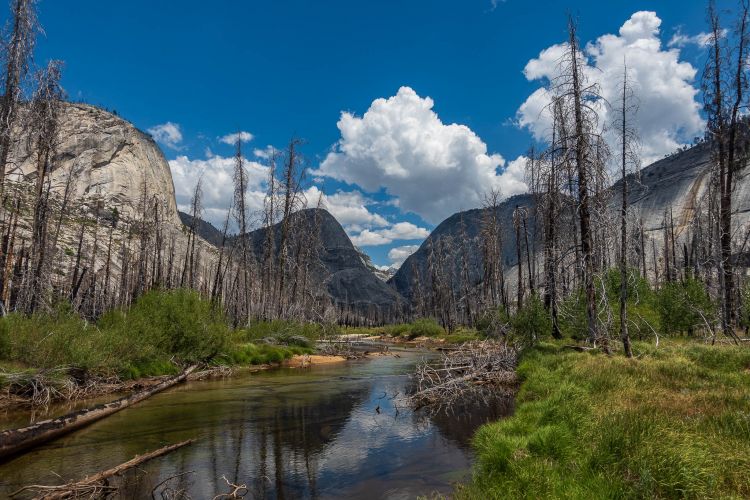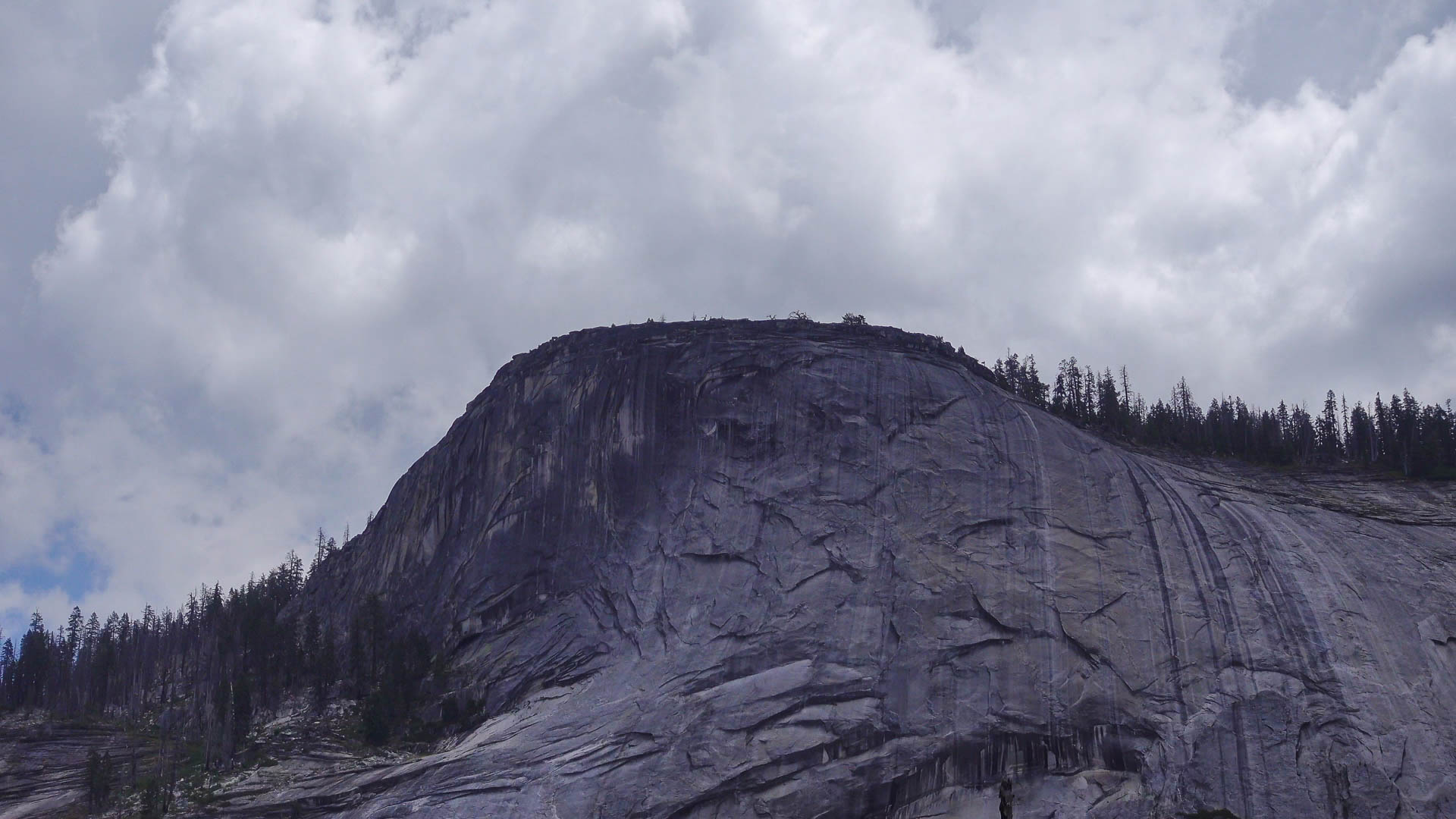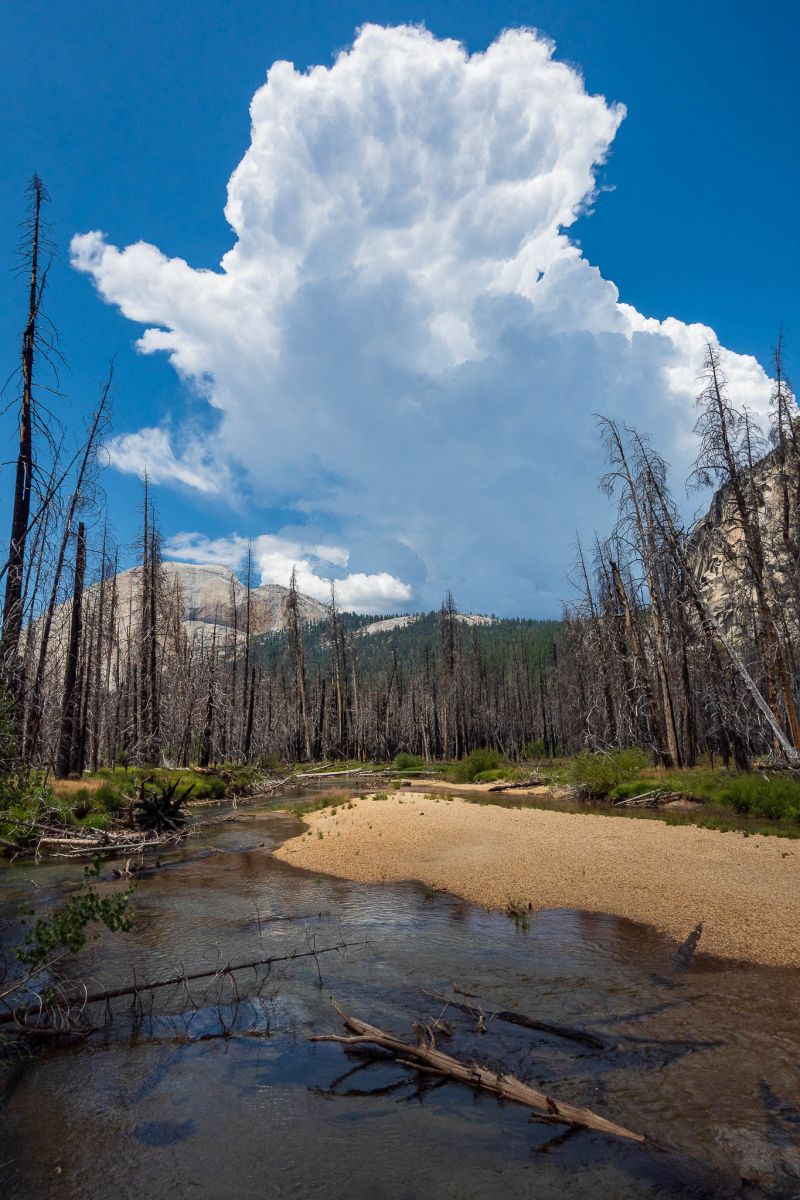
This is exactly the camera I’ve been wanting for years to make simple videos journals with. Well, it’s almost perfect, but not quite! The Sony ZV-1 is a compact vlogging camera, made specifically for creating video on-the-go, and it’s pretty much perfect for that task.
What makes it so good? What makes it….not quite perfect? We’ll talk about both at length in this review, but here’s the spoiler: The design, features, functions, video quality, portability, and affordability all are very well-suited for the specific purpose of vlogging, right down to the practical features like the ability to turn the camera on or off simply by opening or closing the rear LCD.
On the other hand, however, I do miss the wider zoom range of the Sony RX100 VII, (the equivalent of 24-200mm, instead of 24-70mm) and, alternately, it’s a shame the ZV-1’s lens doesn’t go wider than 24mm, since ~20mm is my favorite focal length for vlogging.
So, is it the best little vlogging camera around? Yes, absolutely! But, I still have not decided if I’d rather have this camera or a Sony RX100 VII, to be honest. So, I’m going to gather my thoughts as I write this review, and you can follow along with me; by the time we get to the conclusion, hopefully, we will both know for certain which camera is right for us, even if we decide to go with different cameras.
We’ll talk about the pros and cons of the Sony ZV-1, of course, and then we’ll talk about how the camera compares against the Sony RX100 VA, the Sony RX100 VII, (mk7) and we’ll even throw the Canon Powershot G7X III into the mix, since it is one of the most similar competitors…
Sony ZV-1 Specifications

- SENSOR: 1″ type BSI CMOS sensor (~2.6x crop factor) Bionz X processor
- FOCAL LENGHT & APERTURE: 24-70mm (equivalent) f/1.8-2.8
- STILL IMAGES: 20 megapixels, (5472 x 3648) Raw & JPG
- VIDEO: 4K XAVC, 30p, 24p, 100 megabit, 60 megabit, 1080p XAVC HD, 120p, 60p, 30p, 24p
- ISO: 125-12800, expandable to ISO 50-25600
- AUTOFOCUS: Hybrid Phase-Detect & Contrast-Detect, Face & Eye AF, Real-Time Tracking
- SHOOTING SPEED: Up to 24 FPS, with AF; 75 image buffer @ 20 FPS, “medium” speed 10 FPS
- SHUTTER SPEEDS: 30 sec to 1/2000 sec mechanical, up to 1/32000 sec electronic
- VIEWFINDER: NO
- LCD: 3″, 921K-dot, Fully-articulated touchscreen display
- CONNECTIVITY: Wifi, Bluetooth, compatible with the optional accessory remote GP-VPT2BT
- STORAGE: SD, UHS-2
- BATTERY: Sony NP-BX1/M8 (260 shot CIPA rating)
- BODY CONSTRUCTION: Plastic & Metal, not weather-sealed
- SIZE: 4.13 x 2.36 x 1.73 in. (105 x 60 x 44 mm)
- WEIGHT: 0.65 lb / 10.37 oz (294 g)
- PRICE: $748.95 (B&H)
Sony ZV-1 Review | Who Should Buy It?
Let’s get right to the point: This is an ultra-compact vlogging camera, plain and simple. If you don’t vlog or take lots of selfies, then there are better cameras out there for you!


In fact, the Sony ZV-1 is almost identical to the Sony RX100 VA. The biggest difference is that the RX100 VA has an EVF, while the ZV-1 does not. That difference alone should mean that the RX100 VA is definitely worth saving up a little bit more money to get. That is, $850 for the RX100 VA instead of $750 for the ZV-1, if you get the frequent rebate, but $1,000 versus $800 if not.
The ZV-1 is also very similar to the Sony RX100 VII (mk7), but with the biggest difference (compared to both the RX100 VA and the ZV-1) being the switch from the 24-70mm equivalent f/1.8-2.8 lens to a 24-200mm equivalent f/2.8-4 lens.
Personally, as someone who does a bit of vlogging, but who also does a lot of more casual snapshot-taking, and even the occasional serious landscape photo and BTS time-lapse, I’m very tempted by the Sony RX100 VII in particular, even though its price tag bumps your budget up even further to $1,200, or $1,300 without a rebate. For the EVF and 24-200mm lens in such an ultra-light package, one that is still no slouch for vlogging, I’m honestly very torn.
Either way, just ask yourself: are YOU into vlogging? Do you want the most compact vlogging camera with the best quality? This could be a perfect camera for you. Otherwise, probably not.
Even if you use a large mirrorless camera on a gimbal as your main vlogging rig, as many serious Youtubers do, the ZV-1 could still make a perfect backup or 2nd/BTS (behind-the-scenes) camera. Its tiny size means it can be added to your kit and you’ll forget that it’s even in your camera bag! Or, if you’re planning to go on an extremely challenging hike or climb in the mountains, you might just want to leave your full-size rig at home, and bring something that weighs less than a pound.
So, if you’re an aspiring vlogger making tons of Youtube videos about life, products, or your wanderlust lifestyle, this is a great way to get started or to take your show anywhere in the world.

But, also, if you mainly do something else like portraits or weddings or other types of photography, and you also make Youtube videos on the side just for your own entertainment or marketing, the Sony ZV-1 is even more perfect because of its tiny size, nearly weightless handling, affordability, and overall suitability to quick-and-easy vlogging.
Long story short, you have to really like vlogging to want this camera, but if you do, it almost doesn’t matter if you haven’t even made your first video yet, or you’re a pro who is about to hit 1M views on Youtube–this camera should be your top consideration for portable, affordable setups.
Sony ZV-1 Review | Pros
So, what makes the Sony ZV-1 so good for vlogging? Some of its pros are really interesting and highly useful, such as the ability to set the camera to turn on and off just by flipping out the rear LCD as I mentioned earlier. This makes grabbing a quick clip while you’re on the go super easy, even effortless.
But, we’re getting ahead of ourselves. Let’s dive into the pros (and cons) of what makes this such a good camera for vlogging and, unfortunately, what might make it less of a perfect camera for photo/video purposes other than vlogging…
Image Quality


TL,DR: The image quality from the ZV-1 is very impressive, not just “for a camera/sensor that size/price” …it’s just very good, period. Both the video and still image quality are gorgeous!
Here is a vlog I created using the ZV-1; please pardon my boring personality and questionable choice in music! All video clips were recorded on the ZV-1, but of course, all of the time-lapse footage created by myself and my co-adventurers was captured with full-frame cameras as raw stills.
I’ll be honest: as a totally amateur Youtuber and maker of nature videos, I don’t obsess very much about how video specs affect actual image quality. I understand bit-rates and I dabble in LOG color-grading, but that’s about it. All I can tell you is what the specs say on paper, and what my real-world experience is with how things turn out.
I usually shoot with my Sonys set to “Neutral” Creative Style, but since the ZV-1 mysteriously does not have that particular Creative Style, I switched to using a Picture Profile instead, usually PP4 (Gamma ITU709) for daytime conditions, since it allows me to use ISO 125 as well as the built-in ND filter. Then, I use PP6 (Cine2) for extremely low light, since although it starts at ISO 1000, it gives significantly better image quality at ISO 6400 and 12800. Having said that, if you’re not interested in editing your footage, just leave it in “Standard” Creative Style, and turn the contrast down, and/or use the Dynamic Range Optimizer (DRO) to boost your shadows in harsh conditions…
I have a calibrated 4K display, I edit in DaVinci Resolve 16, and I keep my color grading very minimal; I usually just apply a slight bump to curves and that’s it.


With that in mind, the colors, contrast, and detail coming out of the Sony ZV-1 in daytime conditions are all gorgeous. The over-sampled (20-megapixel sensor) 4K resolution is impressive, honestly I barely see a difference between it and my A7R IV and A7III, when shooting around ISO 100.
At higher ISOs, noise becomes much more present, however, thanks to the f/1.8, 24mm equivalent wide-angle end of the ZV-1’s lens, I know I’ve got an advantage over most other cameras in this tiny form factor, especially those with even smaller, non-BSI sensors. Plus, using a Sony Picture Profile with a minimum ISO of 1000, well, while it’s not exactly an A7S III, it certainly is a huge help in keeping the noise down.



The bottom line is that this is the best-in-class image quality when you combine the impressively sharp lens with the amazingly good sensor. That goes for both photos and videos, at low and high ISOs. In fact, if you’re not really a pixel-peeper who zooms into the corners of images, or who worries about noise levels in large prints, this could be the only camera you ever need!


The only drawback that is remotely related to image quality might be that the default brightness and default Creative Style are very bright; if you ever want to photograph dynamic scenes with bright highlights, you’ll want to dial the exposure down to -1 EV orso, and then use the DRO at around +3 to +5, in order to brighten the shadows back up. It’s like HDR mode for your in-camera processing!
Autofocus Performance

Another thing that is best-in-class for Sony cameras, in general, is their mirrorless autofocus technology. Despite being a completely different sensor from their more well-known full-frame and APS-C E-mount cameras, the ZV-1’s AF is very accurate and reliable. It quickly locks onto your face, and sticks to it like glue.
The ZV-1 does have some extra tricks up its sleeves too in terms of focus. For one, there’s the “product showcase mode”, which focuses on your face by default, of course, but is always ready to quickly snap focus onto anything you hold up close to the camera in front of your face, which is very common these days among Youtubers who do product reviews. We weren’t able to film a shampoo commercial of our own, but we’ve seen many examples of how this feature really works well!
The second thing that is related to focus, though not related to autofocus per se, is the ZV-1’s new “Background Defocus” feature, which is a one-touch custom button that simply forces the camera to its fastest aperture for maximum background blur. Think of it as Av mode that is locked at f/1.8-2.8.
All in all, not only is it great autofocus, but it has extra tricks that make it even better for vlogging in particular.
Overall Performance & Features

Since the ZV-1 is such a specialty camera, the rest of its performance and handling are all aimed at suiting that goal. There is a fully-articulating LCD, but no viewfinder. There is a microphone input, as well as a hotshoe with connections for Sony’s special microphone, but there is no headphone jack. The microphone itself is large, taking up a significant portion of the top panel of the camera, and a clip-on deadcat is included. The REC button is a big fat red button very near the shutter release, instead of a smaller button placed elsewhere on the camera.
The stills shooting experience is great too, with a maximum framerate of 24 FPS for short bursts, and a more “reasonable” frame rate of 10 FPS for action shooting with a more decent buffer. The maximum shutter speed is 1/2000 sec mechanically, but up to 1/32000 electronically.
I could go on, but the bottom line is this: Aside from the missing viewfinder, there’s not much about the camera that would be a deal-breaker if you’re hoping to make vlog-style videos. Either this is the best camera for the job, OR, the performance & features of a Sony RX100-series camera is more suitable for you.
Design & Durability

The ZV-1 seems to be a little bit more plastic than its RX-series siblings, but that is probably a good thing for anyone who is going to be holding the camera out at arms’ length a whole lot. It’s certainly no Gopro, though, and if you’re the type of vlogger who does a lot of crazy outdoor adventure stuff, you might want to think twice about the ZV-1.

Having said that, the camera is still very well-built, and the overall ergonomics are great, especially for anyone who is going to be holding the camera facing towards them just as much as away from them.
The only design thing missing that I might have liked to see would have been the control ring around the lens, for easily changing exposure when vlogging, or maybe if the touchscreen had more functionality while shooting, that could help too.
Value



It’s $750, (or $800 if you miss its $50 off opportunity) and that’s a small amount less than a Sony RX100 VA, depending on the rebate situation, and a significant amount less than a Sony RX100 VII, especially depending on the rebates at the time. Either way, it’s the best value around for compact vlogging setups, period. We’ll mention the only other camera with the same price point and a highly similar feature set, the Canon G7 X III, later, but in terms of its value you can’t beat the ZV-1.
Sony Vlogger Accessory Kit – GP-VPT2BT Wireless Shooting Grip
For an extra $98-148, you can get the “selfie stick and tripod and wireless remote” that is compatible with a few of the latest Sony cameras, including the ZV-1 and RX100 VII, as well as the A7R IV, A6600, and a few others.
It’s a unique little accessory that works very well, and offers an extension of the ZV-1’s shooting ability. We wish it were just a little bit longer, or that it could be extended physically, because unless your arms are rather long, that 24mm wide-angle end will crop pretty close to your face. I suppose for most vloggers that’s a good thing, but I’d rather give viewers a bit more distance from my mug.
Sony ZV-1 Review | Cons

So, we’ve already hinted at the drawbacks of the ZV-1 here and there. Let’s just quickly list them, and ask ourselves if they’re deal-breakers or not:
- No EVF
- No headphone jack
- Widest focal length of 24mm
- Longest focal length of 70mm
- No 4K 60p
- Electronic stabilization crops in and introduces serious rolling shutter
- No “control ring” around the lens
- Touchscreen could use additional functionality
Okay, first of all, some of these drawbacks, like the 24mm wide end of the lens, aren’t even things that an alternative offers, period. They’re just complaints I have, that I’d like to see Sony improve upon. (Side note: Nikon almost made a same-sized camera with an equivalent 18-50mm lens, but unfortunately, that whole line was canceled!)


The other drawbacks, such as the lack of the EVF, are not tough dilemmas to consider–just buy a Sony RX-series camera instead!
So, if none of these things are a big deal to you, then jump on a ZV-1 and start making videos! If even one of your vlogs goes viral and gets a million views, (while the rest of us are waiting for a ZV-2? A ZV-1ii?) …you’ll have paid off your camera investment!
However, if you’re hesitant about a bunch of these cons, then you’ll either have to go with an RX-series camera that is slightly less perfect for vlogging, or wait for the “mark-2” generation of Sony’s ZV-series.
Sony ZV-1 Review | Compared To The Competition

Basically, Sony has one heck of a monopoly on this form factor of camera. If you’ve got $750-1,200 to spend, Sony has got you covered in terms of the 1″ sensor compact camera lineup. The ZV-1 is your top choice if you’re specifically a vlogger, and the RX100 VA is a fantastic alternative if you like almost everything about the ZV-1, but want an EVF. Lastly, the RX100 VII is just a beast of a unique little camera, with its 24-200mm equivalent lens. Nowhere else can you get such a zoom range with all that impressive Sony autofocus prowess in such a compact package!
The closest competitor is going to be the Canon G7 X III. It costs $750, just like the Sony ZV-1, and also has an f/1.8-2.8 lens, in this case a 24-105mm equivalent. That long end of the zoom range is nice, but from what we’ve seen, the lens itself isn’t as sharp as the Sony. Sony has been working on this lens for six or seven generations now, it’s just that good.
Canon’s G7-series is no slouch, with a 1″-type sensor that also captures gorgeous raw images and delivers solid 4K video quality. It has a 30 FPS burst rate, and a flip-up screen for vlogging and selfies, which some people prefer instead of the side-flip.
Just like the ZV-1, the Canon also has a built-in ND filter, a mic input, and, unfortunately, no EVF.
All in all, the Canon is a great camera, and if you’re at all familiar with Canon’s system, (maybe you started with a Rebel camera, and want to get into vlogging with something even more compact?) …it’s certainly a great choice. However, in terms of the sheer quality of the final results, the Sony ZV-1 will pull ahead in a few respects, specifically the autofocus reliability and the sharpness coming from the Sony/Zeiss lens.
Sony ZV-1 Review | Conclusion

Now that I’ve had a chance to put all my thoughts into writing, I must conclude that I still haven’t found a truly perfect vlogging camera. The Sony ZV-1 comes pretty close, but I’ve realized that I do a lot more general photography, not just vlog-style video shooting, to live without an EVF. That’s one big point in favor of an RX-series camera.
Also, when I do vlog, I am often doing something ridiculous, like scrambling up a hillside or through the bushes, so I wish that the electronically enhanced stabilization had a little less-severe rolling shutter effect. Plus, since “Active” SteadyShot does crop in a bit more too, I do wish the lens went a little wider!
For the same reasons, I also wish the whole body was a bit more durable. (NOTE: I really wanted to like the Sony RX-0 cameras, with their indestructible design, but I couldn’t get past the f/4, 24mm equivalent prime lens. If it had been an f/1.8 lens, at 24mm or 20mm equivalent, I would have bought one for sure!)

Lastly, for general photography, I do really like that 24-200m lens of the Sony RX100 VII.
All in all, if I did nothing but vlogging, or even just a little bit more vlogging than stills and regular photography, the ZV-1 would be attractive enough that I’d buy one for sure. I highly recommend it to anyone who is also into vlogging, of course. I’m very curious to hear if other people like it too, though, so please leave a comment below and tell us why you do (or don’t) want to get the Sony ZV-1!
Check Pricing & Availability
The Sony ZV-1 is available both alone for $748, ($798, if you miss the rebate) …or in a kit with the selfie/tripod grip, a $148 value, for $846.
9.1 Score
Pros
- Fantastic image quality from sensor
- Fantastic image quality from lens
- Best-in-class autofocus performance
- Numerous features perfectly suited for vlogging
- Ultra-portable
- Good battery life, for its size
- Affordable compared to similar alternatives
Cons
- Limited zoom range compared to RX100 VII
- No Electronic Viewfinder (EVF)
- Active SteadyShot crops image and introduces more rolling shutter
- Touchscreen not as functional as it could be
Final Verdict
The Sony ZV-1 is the best compact vlogging camera around, though it's not quite perfect, and some of the key differences might incline you to save up a little more for a Sony RX100-series camera instead.
Matthew Saville
Follow his wilderness nightscape adventures on Instagram: instagram.com/astrolandscapes




Get Connected!